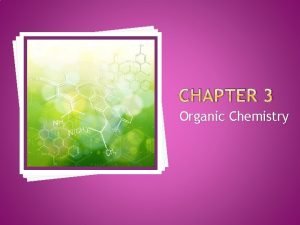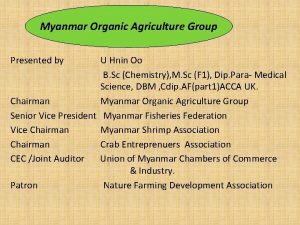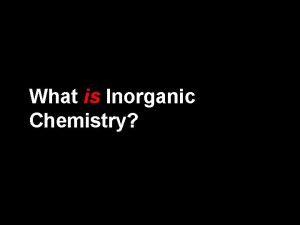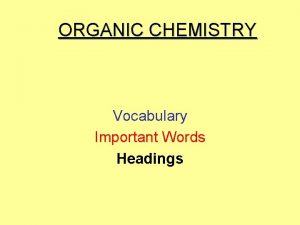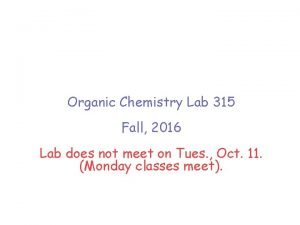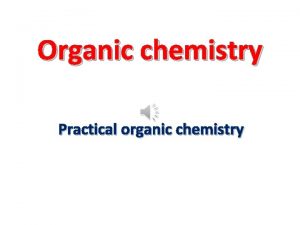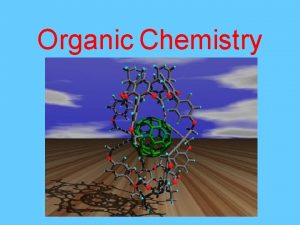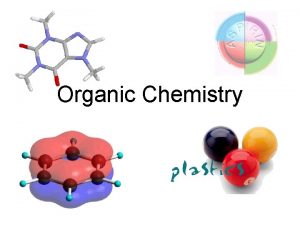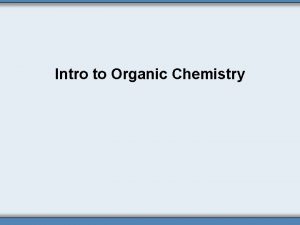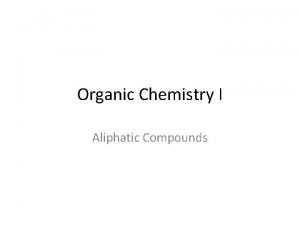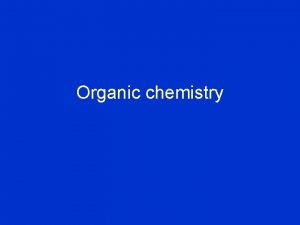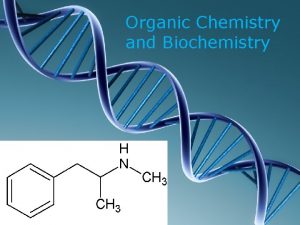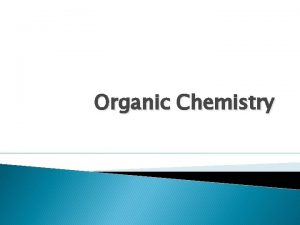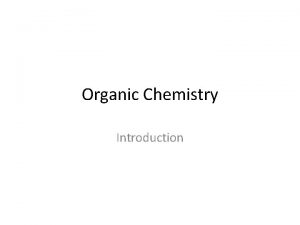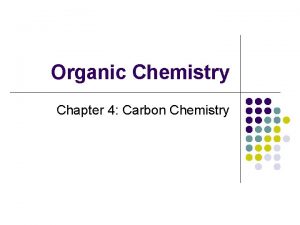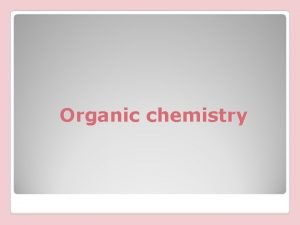Organic Chemistry 4 th Edition Chapter 28 Paula














































- Slides: 46

Organic Chemistry 4 th Edition Chapter 28 Paula Yurkanis Bruice Synthetic Polymers Irene Lee Case Western Reserve University Cleveland, OH © 2004, Prentice Hall

A polymer is a large molecule made by linking together repeating units of small molecules called monomers

Chain-growth polymers, also known as addition polymers, are made by chain reactions

Step-growth polymers, also called condensation polymers, are made by combining two molecules by removing a small molecule

Chain-Growth Polymers Chain-growth polymers proceed by one of three mechanisms: radical polymerization cationic polymerization anionic polymerization


Radical Polymerization



The molecular weight of the polymer can be controlled by a process known as chain transfer

Chain-growth polymerization of monosubstituted ethylenes exhibits a marked preference for head-to-tail addition

Head-to-tail addition of a substituted ethylene results in a polymer in which every other carbon bears a substituent

Head-to-tail addition is favored for steric reasons Groups that stabilize radicals also favor head-to-tail addition



Branching of the Polymer Chain

Branched polymers are more flexible

Cationic Polymerization the alkene monomer reacts with an electrophile



The carbocation intermediates formed during polymerization can undergo rearrangement

Monomers that are best able to undergo cationic polymerization are those with electron-donating substituents

Anionic Polymerization Nonterminated chains are called living polymers The chains remain active until they are killed



Ring-Opening Polymerization


Stereochemistry of Polymerization substituents on the same side substituents regularly alternate on both sides

Long, unbranched polymers can be prepared using an aluminum–titanium initiator (Ziegler–Natta catalyst)


Polymerization of Dienes

Synthesis of Synthetic Rubber

The product resulting from polymerization of different monomers is called a copolymer

Four Types of Copolymers

Progress of a Step-Growth Polymerization

Nylon 6 is an example of a step-growth polymer formed by a monomer with two different functional groups

The incorporation of aromatic rings into polymers improves the physical strength of the polymers


Polyesters are step-growth polymers in which the monomer units are joined together by ester groups

Polyesters with two ester groups bonded to the same carbon are known as polycarbonates

Epoxy resins are the strongest adhesive known

A urethane (carbamate) is a compound that has an OR group and an NHR group bonded to the same carbonyl compound

Thermosetting Polymers Very strong and rigid materials can be obtained by cross-linking

Oriented Polymers These polymers are stronger than steel They can conduct electricity

Biodegradable Polymers These polymers can be broken into small segments by enzyme-catalyzed reactions

Other Polymers Thermoplastic polymers have both ordered crystalline regions and amorphous, noncrystalline regions Elastomers are polymers that stretch and then revert to the original shape Plasticizer is an organic compound that is added to a polymer to make it more flexible
 Thermodynamic vs kinetic control
Thermodynamic vs kinetic control Organic chemistry (3rd) edition chapter 1 problem 20s
Organic chemistry (3rd) edition chapter 1 problem 20s Halohydrin formation
Halohydrin formation Rearranged most stable carbocation is
Rearranged most stable carbocation is Is alkane an organic compound
Is alkane an organic compound David klein organic chemistry
David klein organic chemistry Organic chemistry third edition david klein
Organic chemistry third edition david klein Organic chemistry 2nd edition klein
Organic chemistry 2nd edition klein Klein
Klein Ib chemistry functional groups
Ib chemistry functional groups Organic vs inorganic chemistry
Organic vs inorganic chemistry Importance of organic chemistry
Importance of organic chemistry Chapter 22 review organic chemistry section 1 answers
Chapter 22 review organic chemistry section 1 answers Organic chemistry chapter 9
Organic chemistry chapter 9 Chapter 7 chemistry review
Chapter 7 chemistry review This name
This name Analytical chemistry chapter 1
Analytical chemistry chapter 1 Founder of organic chemistry
Founder of organic chemistry Soap organic chemistry
Soap organic chemistry Ester organic chemistry
Ester organic chemistry Hexanoic acid structure formula
Hexanoic acid structure formula Ee organic chemistry
Ee organic chemistry Leveling effect organic chemistry
Leveling effect organic chemistry Ario practice problems
Ario practice problems Priority sequence of functional groups
Priority sequence of functional groups Organic chemistry lab report format
Organic chemistry lab report format Organic chemistry conversion chart
Organic chemistry conversion chart Grade 10 organic chemistry
Grade 10 organic chemistry Organic chemistry
Organic chemistry Kiliani fischer synthesis
Kiliani fischer synthesis Meth eth prop bute
Meth eth prop bute Cracking organic chemistry
Cracking organic chemistry Organic biochemistry
Organic biochemistry Organic chemistry myanmar
Organic chemistry myanmar Propagation organic chemistry
Propagation organic chemistry Gc organic chemistry
Gc organic chemistry Hono organic chemistry
Hono organic chemistry Leaving group ability
Leaving group ability Organic chemistry topic 11
Organic chemistry topic 11 Organic chemistry reaction pathways
Organic chemistry reaction pathways Organic chemistry nomenclature
Organic chemistry nomenclature What is organic chemistry like
What is organic chemistry like Organic vs inorganic chemistry
Organic vs inorganic chemistry Organic chemistry vocabulary
Organic chemistry vocabulary Separation scheme of caffeine from vivarin tablets
Separation scheme of caffeine from vivarin tablets A level chemistry ocr organic synthesis
A level chemistry ocr organic synthesis Compound lipids definition
Compound lipids definition















